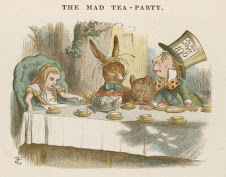Duopoly ideology is riddled with paradoxes and contradictions resulting from its binary form. Consider, for instance, that the phenomenon of increased polarization in the context of ideological convergence between the two parties leads to intra-party polarization on both sides of the duopoly divide. In other words, the more similar the parties become, the greater the need to differentiate them from one another, the greater the split internal to each of the parties.
This may go some way toward explaining low voter turnout in the United States, as well as the relatively high percentage of Americans who affiliate with neither of the duopoly parties: polarization turns off moderates while convergence repels hardliners. What are the implications of this for third party strategy?
The perception that third party activism, and, by extension, third party voting, is an exercise in futility is perhaps the greatest hurdle that needs to be overcome by any effective third party campaign. Duopoly ideology reproduces the reigning two party system by making changes to that system appear impossible. The question then is how to make the "impossible" appear possible. On the other hand, we may also ask how duopoly ideology makes the possible appear impossible. The latter question, clearly, is easier to answer than the former.
By framing political discourse as a simple binary operation, duopoly ideology obscures the reality of political antagonism. In the mainstream media, this is most evident in "he said/she said" style political reporting, in which perspectives that lie outside the sphere of "legitimate controversy" are simply ignored, and a given issue is considered exhausted when a Democrat and Republican, or liberal and conservative, have come to a disagreement. The sphere of legitimate controversy is constituted by this very practice, and political debate is thereby reduced to a function of the Republican/Democratic divide.
How then to make the "impossible" appear possible in such a discursive context? The first step may be simply to enlarge the sphere of legitimate controversy by capitalizing upon rifts internal to each of the duopoly parties, what I referred to above as intra-party polarization. This, however, is undoubtedly not sufficient to mount a successful third party campaign. In a piece that details the factional components of the Republicrat and Demoblican Party coalitions, The Jacksonian Party provides a promising outline for a successful third party, and makes a strong case that any such political insurgency must peel off disaffected supporters from the duopoly parties and reach out to potential voters who feel disenfranchised from the system as a whole. Making the impossible appear possible is itself possible only on the condition that one recognizes the fact that there already is a wide base of potential supporters for third party candidacies.
Subscribe to:
Post Comments (Atom)


1 comment:
Very effective material, thank you for this post.
Post a Comment